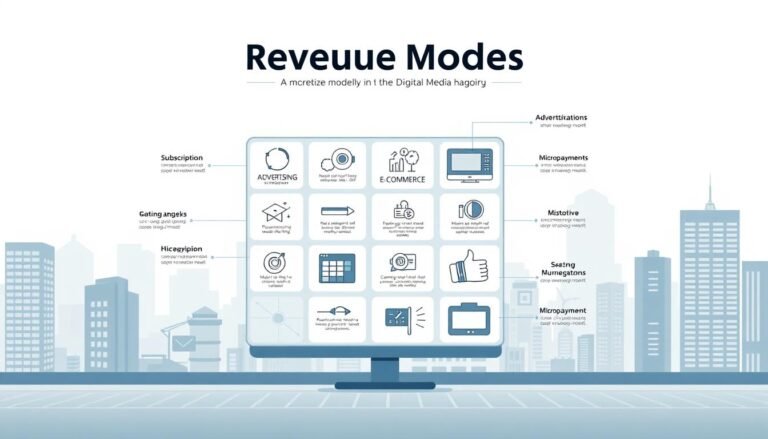Airline revenue management
Ever wondered how airlines set ticket prices to make more money? It’s all about airline revenue management. They use data to figure out the best prices. This includes looking at demand, competition, and how customers act.
Airlines use special software to change prices quickly. This way, they make sure every seat is sold for the highest price. They balance how many seats to sell and when to sell them.
Modern airlines use AI and machine learning to guess how many people will fly. These tools help them deal with ups and downs in demand. They also make sure customers are happy by adjusting prices and offering special deals.
Key Takeaways
- Airlines use data-driven systems to adjust ticket prices in real time.
- Passenger profiling helps tailor pricing to different customer groups.
- AI and machine learning improve demand forecasts and pricing accuracy.
- Yield management focuses on maximizing revenue per seat through strategic adjustments.
- IATA courses provide hands-on training in revenue management tools and techniques.
Understanding Airline Revenue Management Fundamentals
Modern airlines use airline revenue management to manage supply and demand. Seats are gone once a flight leaves. This field has grown from simple seat sales to complex data-driven methods. Let’s look at how it shapes today’s industry.
The Evolution of Revenue Management in the Aviation Industry
In the 1970s, American Airlines introduced the Super Saver fare. It was a discounted price for early bookings and stays. Southwest later used dynamic pricing, showing that flexible airline pricing strategy can increase profits. Back then, calculations were manual. Now, algorithms analyze millions of data points instantly.
Key Components of an Effective Revenue Management System
- Demand forecasting: Predicts bookings using past trends and outside factors like holidays.
- Inventory control: Manages seat allocation across fare classes to avoid overbooking or underutilization.
- Pricing optimization: Adjusts fares using AI-driven models to match demand changes.
| Component | Description |
|---|---|
| Demand Forecasting | Uses historical data to predict future ticket demand |
| Inventory Control | Optimizes seat allocation across flight routes |
| Dynamic Pricing | Adjusts fares in real-time based on demand and competition |
How Revenue Management Differs from Traditional Pricing
Traditional pricing has fixed rates for all. Airline revenue management changes fares based on real-time data. For example, economy seats might go up as the flight gets closer if demand is high. This is different from static pricing, which doesn’t account for perishable inventory risks.
Modern systems also group travelers into types like leisure vs. business. They tailor offers to each group. This approach makes more money than one-size-fits-all pricing.
Why Revenue Management is Critical for Airline Profitability
Airline revenue management (ARM) is key for airlines to succeed in a tough market. They have high costs for planes and operations. So, making every seat count is crucial.
Revenue optimization helps flights make more money. It uses data to fill seats without selling too many. This turns data into smart decisions.
Today, AI and machine learning help analyze demand and customer behavior. For example:
| Company | Strategy | Outcome |
|---|---|---|
| Lufthansa | AI-driven dynamic pricing | Real-time adjustments increased revenue by 10%. |
| British Airways | Customer segmentation via booking history | 15% rise in ancillary revenue from personalized offers. |
| Southwest Airlines | Machine learning demand forecasts | Improved seat allocation and 8% higher profitability. |
Tools like Aviator help set prices and track performance. Even small improvements can bring in millions. Empty seats mean lost money forever.
Using these strategies is not just a choice—it’s a must. In an industry with thin margins, it’s essential to stay competitive.
Core Principles of Airline Revenue Management
Effective airline revenue management relies on four key strategies. These strategies balance demand, inventory, pricing, and overbooking to boost profits. Let’s dive into each strategy.
Demand Forecasting Techniques
Accurate revenue forecasting in airlines begins with analyzing past data. Airlines look at booking trends during holidays or big events to adjust prices. Modern tools use machine learning to predict demand changes due to economic shifts or competitor moves.
For example, Lufthansa uses AI to improve forecasts in real time. This helps them adapt to sudden demand increases.
Inventory Control Strategies
Managing seat availability is crucial. Airlines balance fare classes like economy and premium. They use nesting strategies to give priority to higher-paying customers.
Tools like Amadeus’ Altea system help set hurdle rates and bid prices. This ensures the best revenue streams.
Price Optimization Methods
Dynamic pricing changes ticket costs based on demand. Airlines often discount seats early to fill flights. Then, they raise prices closer to departure.
Companies like JetBlue use continuous pricing models. They integrate real-time data from IoT sensors and NDC platforms to adjust prices instantly. AI systems from Hopper or Kambr analyze traveler behavior to set the best rates.
Overbooking Policies and Management
Strategic overbooking makes up for no-shows. Airlines use statistical models to find the right overbook level. When there’s too much capacity, they use voluntary seat auctions or rebooking incentives.
This keeps disruptions low while keeping customers happy.
By using these strategies, airlines like AirAsia and United boost revenue without losing efficiency. Modern tech partnerships and data-driven decisions help them stay ahead in a changing market.
Developing an Effective Airline Pricing Strategy
A strongairline pricing strategyneeds to balance fare design, competitor analysis, and sales of extras. Start by setting up fare classes that meet different customer needs. For example, Economy fares start at $200 for domestic flights, while Business Class offers more for $800+.
This tiered approach makes prices appealing to both those on a budget and those willing to spend more.
Fare Classes and Structure Design
Good fare structures use codes like Y (economy) and F (first class) to set rules and benefits. Airlines like Hawaiian Airlines use PROS WTP models to predict demand and adjust seat availability for premium buyers. Key tips include:
- Create distinct tiers with clear service differences
- Limit high-value seats to sustain premium pricing
- Test dynamic pricing for last-minute discounts
Competitive Pricing Analysis
Keep an eye on competitors using tools like ATPCO databases to track fare changes. Making real-time adjustments helpsrevenue optimization in airlinesby avoiding fixed prices. For example, prices go up during peak holidays and down during off-peak times to fill seats.
Ancillary Revenue Opportunities
Make the most of extras like seat selection ($20-$50) or baggage fees ($30+). Partner offers, like hotel bookings, increase average revenue per passenger. Lufthansa’s pricing model now combines WTP data with seasonal trends to tailor offers dynamically.
Smart pricing strategies use technology, customer insights, and market agility to drive growth.
Implementing Dynamic Pricing for Airlines
Dynamic pricing changes how airline revenue management works. It uses real-time data to adjust prices quickly. This ensures seats sell at the best rates. Airlines like Delta and Lufthansa already update fares every minute.
- Seasonal trends and route popularity
- Competitor pricing adjustments
- Customer booking patterns
- Weather disruptions or last-minute demand spikes
Tools like Fetcherr’s Generative Pricing Engine (GPE) handle millions of data points. This lets prices adjust to maximize revenue. For example, early bookings get lower fares, while last-minute travelers pay more.
Route-based pricing also plays a role. It sets costs based on the route’s business needs. AI systems now outperform old models, even during unexpected events like the pandemic. McKinsey says AI could add $4.4 trillion to corporate profits yearly. PwC believes AI could boost North America’s GDP by 14.5% by 2030.
Airlines working with tech firms like Kody Technolab get better tools for dynamic pricing. These tools have led to a 10% revenue increase. By using these systems, airlines can balance supply, demand, and market conditions for growth.
Revenue Optimization in Airlines: Advanced Tactics
Airlines today use smart strategies to boost their income. They use AI and real-time data to set prices and manage seats quickly. These revenue optimization in airlines methods help them stay competitive while still meeting customer needs.

Market Segmentation Approaches
By dividing customers into groups, airlines can offer prices that fit each group better. For example, Carnival Corporation tailors prices based on what passengers like to do on their cruises. Important factors for segmentation include:
- How often they travel and when they book
- How loyal they are and how much they spend
- What extras they want, like better seats or extra baggage
Customer Willingness-to-Pay Analysis
Understanding how much customers are willing to pay is key for airlines. They use tests, like Amazon does, to see how price changes affect sales. By studying this, airlines can figure out how much to charge for different routes or seats.
Seasonal Demand Management
To handle busy times, airlines adjust how many seats they offer and create last-minute deals. They use machine learning to guess when demand will go up or down. For example, special pricing for winter holidays can increase revenue by 8-12%.
Using these strategies, along with tools like CORSIA compliance, also attracts travelers who care about the environment. This makes the airline more appealing. Airlines that use these methods see a 5-10% increase in sales from extras.
Essential Revenue Management Software and Tools
Choosing the right revenue management software can really help your business grow. Airlines like Cathay Pacific and TUI have seen big improvements. Cathay’s system powered by AWS boosted performance by 20%. TUI’s use of SageMaker helped increase margins through smart pricing.
Leading Industry Platforms Comparison
Here are some top platforms:
- AWS Airlines Solutions—scales with airlines of all sizes, supporting AI-driven forecasting.
- Amadeus Altitude Revenue Management—integrates with global distribution systems for real-time updates.
- Sabre Red 360 Revenue Management—ideal for complex network carriers with multi-brand strategies.
When comparing, look at scalability, API compatibility, and customer support. This helps match your airline’s specific needs.
Key Features to Look For
Look for systems with:
- AI/ML capabilities for demand forecasting (84% of airlines prioritize this).
- Real-time data processing to adjust pricing dynamically.
- User-friendly dashboards for quick decision-making.
Tools like TUI’s SageMaker setup show how machine learning can boost EBITDA margins by 2-5%. This is through precise demand modeling.
Implementation and Integration Considerations
Begin with data migration audits for a smooth transition. Training your staff is key—65% of bookings rely on informed teams. Choose systems that work well with your PSS and CRM platforms to avoid silos.
Look for partnerships like AWS’s aviation-specific modules. They make it easier to work together, speeding up innovation.
Yield Management in Aviation: Maximizing Revenue per Available Seat Mile
Yield management in aviation aims to make the most money from each seat mile. Airlines work hard to balance how many seats they offer, the prices, and understanding demand. They use AI to look at data like booking trends and what competitors are charging. This helps them make quick changes to their pricing.
- Selective capacity management: Adjusting seat availability based on demand peaks and customer segments
- Strategic fare restrictions: Tiered pricing structures to capture different traveler budgets
- Inventory optimization: Allocating seats to maximize average fare revenue
- Targeted promotions: Timing discounts to fill unsold seats without depressing prices
Big airlines like SAS work with Amadeus to use machine learning. This improves their ability to predict demand by 30%. They can then adjust prices, raising them during holidays and lowering them when demand is low. Full-service airlines focus on making more money from their premium seats. Low-cost carriers, on the other hand, make more money from extra services.
Good systems find the right balance between how full the plane is and the ticket prices. Airlines that don’t stick to old ways of doing things do better. They use data from bookings, what competitors are doing, and the economy. This helps them stay ahead in a tough market while keeping customers happy.
Revenue Forecasting Techniques for Airlines
Revenue forecasting in airlines is all about finding the right balance. Today, airlines use a mix of past data and current trends to guess demand. This section will look at how they use advanced methods to improve their plans.
Short-term vs. Long-term Forecasting Models
Short-term models look at flights in the next few months. They use booking patterns and last-minute changes. Long-term plans, on the other hand, look at 3–12+ months ahead. They rely on seasonal trends and big events.
Airlines like Delta and Lufthansa use machine learning. They mix short-term and long-term strategies together:
- Short-term: Time-series analysis for seat availability and price elasticity
- Long-term: Monte Carlo simulations to assess macroeconomic shifts
Data Sources for Accurate Predictions
Today’s systems use many different data sources. They look at social media trends, competitor pricing APIs, and live weather feeds. Airlines use tools from Amadeus and Sabre to combine:
- Historical booking patterns
- Point-of-sale transaction logs
- Geolocation data from mobile apps
AI platforms like Routehappy analyze this data. They spot unusual patterns early. This makes forecasts 15–20% more reliable.
Handling Forecast Errors and Adjustments
No model is perfect. Airlines use forecast error decomposition to find out where they go wrong. Amadeus’ Active Forecast Adjustment (AFA) helps by:
- Monitoring live sales vs. projections hourly
- Adjusting pricing in volatile markets
- Automating overbooking thresholds
A 10% better forecast with AFA can increase annual revenue by 1%. This shows how valuable it is, even after the pandemic.
Overcoming Common Challenges in Airline Revenue Management
Airlines face many challenges like old systems, data problems, and outside pressures. To improve, they need to take specific steps. For instance, they can update their systems using cloud technology and new software.
Also, they must work on making their data better. This means creating rules to ensure their airline revenue analysis is accurate and up-to-date.
Another big issue is the lack of skills in the team. This can be fixed by training and getting different departments to work together. In tough times, like the pandemic, airlines have found ways to stay afloat. For example, IAG partnered with Infinium for green fuels to manage costs and meet demand.
Here are some common problems and how to solve them:
| Challenge | Solution |
|---|---|
| Legacy systems | Cloud-based tools and phased upgrades |
| Data silos | Unified data platforms and governance |
| Cybersecurity risks | Advanced threat detection systems |
| Staff shortages | Automation and AI-driven tools |
To stay ahead, airlines use smart pricing and real-time data. They also need to manage fuel costs, which can change a lot. And, they must keep their systems safe from hackers, as attacks went up 24% in 2023.
By tackling these issues, airlines can build a strong foundation for their airline revenue management in the long run.
Measuring Success: Key Performance Indicators for Airline Revenue Analysis
Airlines need to track the right metrics to improve their revenue strategies. These key performance indicators (KPIs) help turn data into useful insights. This ensures that revenue optimization stays on track.
Revenue Performance Metrics That Matter
- Revenue per Available Seat Mile (RASM): Shows how profitable each seat mile is, highlighting cost efficiency.
- Yield: Measures revenue per revenue passenger kilometer, showing how effective pricing is.
- Load Factor: Tracks seat occupancy rates to gauge demand efficiency.
- Market Share: Compares revenue trends against competitors.
- Forecast Accuracy: Compares predicted vs actual bookings to improve demand modeling.
- Break-even Load Factor: Determines the minimum occupancy needed to cover costs.
Creating Effective Revenue Dashboards
Visual tools simplify complex data. Dashboards should include:
- Real-time updates for dynamic pricing adjustments.
- Drill-down capabilities to explore data details.
- Role-based views tailored to managers, analysts, and executives.
Regular Revenue Review Process
A structured review cycle ensures continuous improvement:
- Daily: Check pricing trends and inventory levels.
- Weekly: Analyze demand shifts and competitor actions.
- Monthly: Assess profitability and adjust strategies.
- Quarterly: Plan long-term goals using historical data.
Post-campaign reviews help identify what drives growth. This creates a feedback loop for sustained revenue optimization in airlines. Regular audits of KPIs and dashboards turn data into decisions that boost profitability.
Case Studies: Successful Revenue Maximization in Air Travel
Leading airlines worldwide have adopted new strategies to increase earnings. They have refined their airline pricing strategy and used advanced tools. This has led to significant gains for airlines like Lufthansa and AirAsia. These examples highlight how using data can change financial results.
- Lufthansa teamed up with Hopper to use AI for demand prediction. This boosted ticket sales by 15% and improved customer satisfaction by 10%.
- AirAsia worked with Kambr to improve their tech systems. This reduced forecasting errors by 22% and increased ancillary revenue by $3 million each month.
- JetBlue integrated FLYr Labs to adjust prices in real-time. This raised average fares by 8% during busy seasons.
- Azul Airlines saw a 12% revenue increase after using Fetcherr’s demand-prediction tools.
- Frontier Airlines used Accelya’s platform to increase revenue per passenger by 14% after the pandemic through dynamic pricing.
- American Airlines made $1.4 billion extra in revenue over three years by improving seat allocation and pricing tiers.
- KLM reduced forecast errors by 18% and boosted seat utilization rates through staff training and system upgrades.
These successes show that revenue maximization in air travel needs custom solutions. Airlines like these have shown that combining tech innovation with data analytics can lead to growth. Whether it’s optimizing overbooking policies or using AI, each example shows the importance of flexible pricing strategies in a changing industry.
Conclusion: Taking Your Airline Revenue Management to New Heights
Airline revenue management is crucial for airlines to handle changing demand and passenger tastes. By getting good at revenue forecasting in airlines, teams can set prices right and keep customers happy. The future will bring new tools like AI, personalized offers, and green practices.
New trends like AI pricing and travel subscriptions create new ways to make money. Airlines like North Star are pricing differently for fun and business trips, showing how it can increase profits. With carbon pricing coming, airlines must forecast carefully to keep their earnings up.
Using tools that analyze data in real-time helps airlines stay ahead. Working with others and sharing revenue can also grow profits. By focusing on airline revenue management, airlines can meet changing consumer needs and global shifts.
Staying up-to-date and using new tools like big data analytics is essential. Airlines that focus on these areas can turn challenges into chances for growth. This ensures they thrive in a rapidly changing industry.
Source Links
- Airline Revenue Management: Definition, How it Works & Examples – https://www.revfine.com/airline-revenue-management/
- Revenue Management Training – https://www.iata.org/en/training/pages/revenue-management/
- Airline Revenue Management – https://www.linkedin.com/pulse/airline-revenue-management-olivier-freiberger-exwoe
- Courses & Diplomas – https://www.iata.org/en/training/courses/airline-revenue-management/talf51/en/
- Fundamentals of Airline Revenue Management – https://link.springer.com/chapter/10.1007/978-3-658-33721-6_1
- Why your Airline’s Commercial Strategy is crucial for Revenue Management to be successful – Maxamation – https://maxamation.com/why-your-airlines-commercial-strategy-is-crucial-for-revenue-management-to-be-successful/
- Unlocking the Future of Airline Profitability: The Role of AI in Revenue Management – https://www.linkedin.com/pulse/unlocking-future-airline-profitability-role-ai-grigorios-kanakousakis-haeee
- Airline Revenue Management: The Shift from Legacy Infrastructure to AI-Based Solutions – https://www.fetcherr.io/blog/airline-revenue-management
- The Evolution of Airline Revenue Management: The Impact of Emerging Technologies | Travel Tech | OAG – https://www.oag.com/blog/airline-revenue-management-impact-technologies
- Airline Pricing Strategies and Factors That Affect Pricing Decision – https://www.flightapi.io/blog/airline-pricing-strategies/
- The Story of Airline Pricing Strategies | Airlines | OAG – https://www.oag.com/blog/the-story-of-airline-pricing-strategies
- Changing the Game: Inside the New Strategy Redefining Airline Pricing – https://skift.com/2024/10/04/changing-the-game-inside-the-new-strategy-redefining-airline-pricing/
- Dynamic Pricing in Airlines: The Profit Strategy Every Airline Needs – https://kodytechnolab.com/blog/dynamic-pricing-in-airlines/
- Dynamic Pricing in Aviation: How AI is Revolutionizing Airline Revenue Management – https://www.fetcherr.io/blog/dynamic-pricing-in-aviation
- Revenue Technology Services | Flying Forward: 10 Strategic Trends in Airline Revenue Management for 2024 – https://www.rtscorp.com/airline/flying-forward-10-strategic-trends-in-airline-revenue-management-for-2024/
- How airlines can gain a competitive edge through pricing – https://www.mckinsey.com/industries/travel-logistics-and-infrastructure/our-insights/how-airlines-can-gain-a-competitive-edge-through-pricing
- Modern Revenue Management in the Cloud Ebook | Travel & Hospitality | AWS – https://aws.amazon.com/travel-and-hospitality/modern-revenue-management/
- Network Revenue Management | Amadeus for Airlines – https://amadeus.com/en/airlines/products/network-revenue-management
- What does "Yield Management" mean? • GlobeAir – https://www.globeair.com/g/yield-management
- How do you measure yield management performance in Sales using revenue per available seat mile (RASM)? – https://www.linkedin.com/advice/1/how-do-you-measure-yield-management-performance-sales-using
- Financial Forecast In Airline industry | Knowledge Ridge – https://www.knowledgeridge.com/expert-views/dynamic-pricing-in-the-evolving-business-landscape
- Rethinking airline revenue management forecasting in times of change – https://amadeus.com/en/blog/articles/rethinking-airline-revenue-management-forecasting
- Airline Revenue Management Strategies that Actually Work – https://www.rtscorp.com/airline-revenue-management/airline-revenue-management-strategies-that-actually-work/
- Aviations Post-Pandemic Recovery: Passenger Traffic & Growth Trends – https://www.gminsights.com/blogs/top-challenges-of-aviation-industry
- The big reset: four phases to airline revenue management strategy planning – https://amadeus.com/en/blog/articles/airline-revenue-management-four-phases-strategy
- What KPIs and Analytics Do Airline Operations Professionals Use? – https://www.inetsoft.com/info/kpis-and-analytics-for-airline-operations/
- Important KPI’s to track in Airlines Industry – https://www.justperform.com/blog/kpi-s-to-track-in-airlines-industry
- What are the key performance indicators and benchmarks for measuring revenue management in airlines? – https://www.linkedin.com/advice/0/what-key-performance-indicators-benchmarks-2f
- PDF – https://www.veritecsolutions.com/wp-content/uploads/2019/12/RM-and-Pricing-Case-Studies-and-App.pdf
- Frontier Airlines Optimize Revenues with Accelya – https://w3.accelya.com/resources/press-releases/frontier-airlines-optimize-revenues-with-accelya/
- "Revenue Management in the Travel Industry" in: Wiley Encyclopedia of Operations Research and Management Science – https://www.veritecsolutions.com/wp-content/uploads/2019/12/RM-In-The-Travel-Industry-Reprint.pdf
- The Evolving Landscape of Airline Revenue Management: A Deep Dive into LCC and FSC Strategies – https://airgain.ai/blog/the-evolving-landscape-of-airline-revenue-management-a-deep-dive-into-lcc-and-fsc-strategies/
- Microsoft Word – project.doc – https://people.orie.cornell.edu/huseyin/teaching/rm_case.pdf








